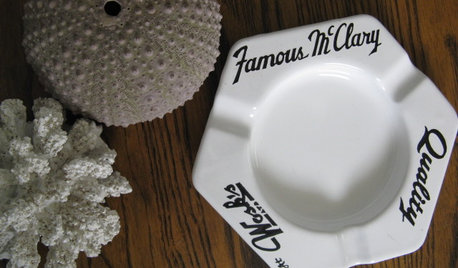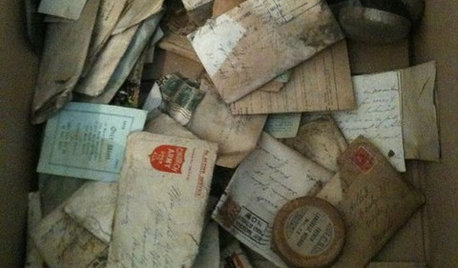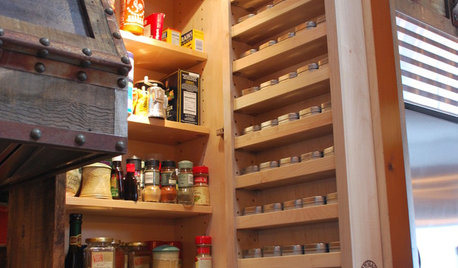Bottled Butter
skeip
10 years ago
Related Stories

DECORATING GUIDESCreative Collector: Vintage Vessels
Great vintage vases and bottles can turn up in unlikely places. Here's where to find them and how best to display them back home
Full Story
LIFESimple Pleasures: Indulging in Teatime
Get out the china cups and cream-slathered scones. Tea with treats can make even an uneventful day feel extravagant
Full Story
KITCHEN DESIGNHow to Become Friends With the Kitchen Again
Get ready for cooking season with music, cookbooks, light, herbs in the window sill and more
Full Story
KITCHEN DESIGNDouble Islands Put Pep in Kitchen Prep
With all that extra space for slicing and dicing, dual islands make even unsavory kitchen tasks palatable
Full Story
REMODELING GUIDESYou Won't Believe What These Homeowners Found in Their Walls
From the banal to the downright bizarre, these uncovered artifacts may get you wondering what may be hidden in your own home
Full Story
HOUSEKEEPINGThe Best Way to Get Your Windows Spotlessly Clean
Learn the pros’ tips and tricks for cleaning windows and getting them streak-free
Full Story
DIY PROJECTS20 Wonderfully Inventive DIY Projects by Houzzers
You'll never look at a wood scrap or empty jar the same way again. Borrow these ideas or just let them inspire your own project
Full Story
MOST POPULARHow to Get Rid of Those Pesky Summer Fruit Flies
Learn what fruit flies are, how to prevent them and how to get rid of them in your home
Full Story
KITCHEN DESIGN7 Steps to Pantry Perfection
Learn from one homeowner’s plan to reorganize her pantry for real life
Full Story
MOST POPULAR33 Magic Household Cleaning Tips
Houzzers from around the world share their tips for transforming housework into child’s play
Full StoryMore Discussions






pqtex
digdirt2
Related Professionals
Havre de Grace Landscape Architects & Landscape Designers · Coram Landscape Contractors · Gallatin Landscape Contractors · Louisville Landscape Contractors · Ponte Vedra Beach Landscape Contractors · Ridgewood Landscape Contractors · River Ridge Landscape Contractors · Saint Paul Landscape Contractors · Salem Landscape Contractors · Setauket-East Setauket Landscape Contractors · Cape Coral Roofing & Gutters · Toledo Roofing & Gutters · Cave Spring Roofing & Gutters · Canton Driveway Installation & Maintenance · Gages Lake Driveway Installation & Maintenancedigdirt2
myfamilysfarm
Linda_Lou
readinglady
2ajsmama
pqtex
myfamilysfarm
PirateJeni